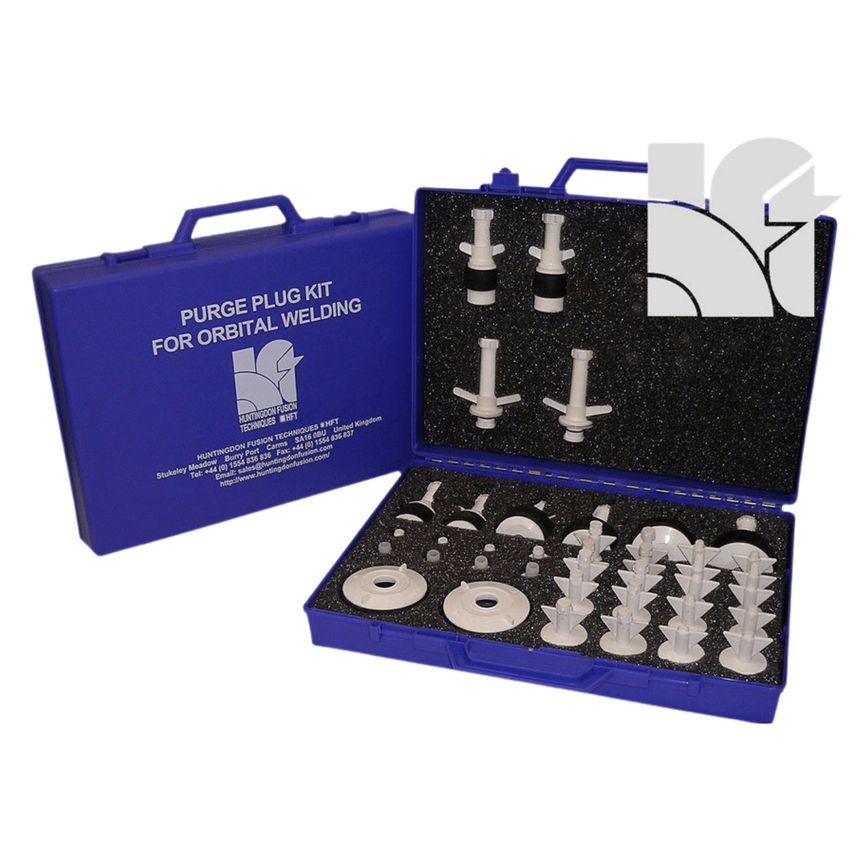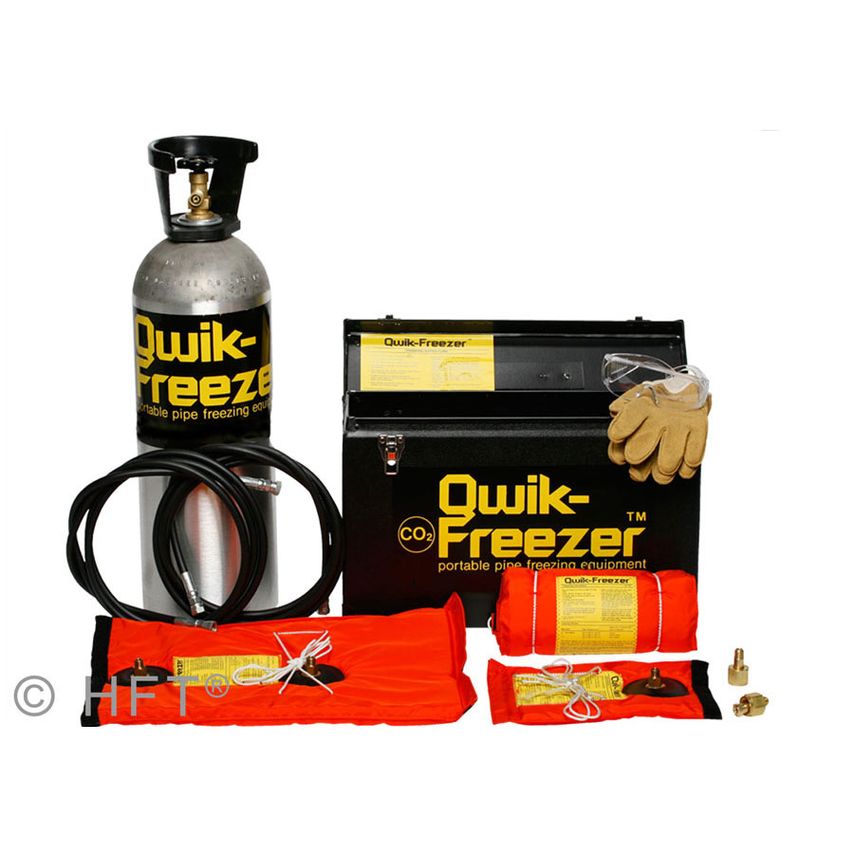Huntingdon Fusion Techniques Argweld Weld Purging Plugs Kit for Orbital Welding PSOC001
Choose Argweld Weld Purge Plugs for efficient welding of alloys and stainless steel tubes and pipes. When you need to fill complex pipework systems with inert gas, our low vapour pressure Argweld Purge Plugs seal all holes and orifices, ensuring high-quality internal purging. They are especially useful for small or irregular diameter pipes where purge systems or dam systems may not be practical.
Made from durable engineering nylon, these plugs, up to 152 mm (6") diameter, won't seize up, rust, or corrode. The inclusion of a friction-reducing acetal copolymer thrust washer makes expansion and release easy, while the standard seals (made from natural rubber) provide effective sealing during welding. Additionally, the plugs can be easily dismantled for cleaning purposes.
Applications:
- Short, complicated, variable size assemblies where purging systems or dams would be too long or do not match the diameters being worked on.
- The expanding rubber seal allows the plugs to be used for weld purging oval and out of round tubes as well as in elbows, tees and other fittings.
- These plugs are also ideal for creating an air-tight seal for leak testing operations.
FAQs
1. What type of material are the plugs manufactured from?
The Weld Purge Plugs are made from engineering quality nylon 6.
2. What is the size range?
The Plugs are manufactured in a range of sizes from 0.5 (13 mm) up to 6 (152 mm).
3. What is the seal made from?
Manufactured with a standard seal made from natural rubber and for special applications seals made of silicone, nitrile and viton rubbers are available.
4. What other applications can the plugs be used for?
These low cost, lightweight plugs service a wide variety of industrial applications. As overnight stoppers they provide a strong barrier in pipeline activities, to prevent foreign bodies entering the line during downtime. Other applications include leak testing of pipework systems, whether commercial, domestic or industrial and sealing holes in castings, tanks and other assemblies.
5. What pressure can the plugs withstand?
A pressure chart is available on the leaflet, which details the pressure each plug can withstand.
6. What is the maximum working temperature for the Nylon Plugs?
Nylon plugs can be used intermittently up to 120?C (248?F) and the natural rubber rings up to 100?C (212?F). In continuous use, the nylon should be restricted to 100?C (212?F) and the rubber ring to 80?C (176?F). For higher temperatures, we manufacture plugs made from steel or aluminium with the rings made from silicone which can be used continuously up to temperatures of 200?C (392?F) and intermittently up to 300?C (572?F).
7. I have a hole to seal, where your plug wont quite seal well enough, but the next size up is too big. Do you have any in between sizes?
The user can extend the range of each plug by a few millimetres by using an exterior rubber seal on top of the ring provided. Each case varies and a solution to suit each circumstance is possible. We have, for example, cut a small section out of a 1 ring to wrap tightly around an 0.75 plug ring and used super glue to join the ends.
8. Can the plugs be used as a permanent stopper in pipes?
Depending on the pressure and the internal surface of the pipes, our plugs can be used effectively as a permanent stopper. The wings can be cropped to prevent tampering. The inside of the pipe should be clean and free from debris at the sealing point.
9. I want to use the plugs in an application where natural rubber is not suitable. Can I have the rings made from other materials?
Yes, we manufacture and stock the sealing rings in silicone, nitrile and viton. We can have the rings made in other materials as well, subject to minimum volumes and delivery requirements.
10. When should I use the Nitrile rubber rings which you have available as accessories?
Nitrile rubber is resistant to many oils and has better resistance to corrosion, weathering and ozone. If you find out that your standard natural rubber ring deteriorates too quickly, you can consider purchasing the nitrile rubber rings as accessories. Nitrile is resistant to many hydraulic oils. A chemical resistance chart for nitrile is available.
11. When should I use the Silicone rubber rings which you have available as accessories?
Silicone rubber may be used continuously up to temperatures of 200?C (392?F) and intermittently up to temperatures of 300?C (572?F). Silicone also has excellent resistance to weathering, corrosion and ozone. Silicone is particularly resistant to skydrol aviation hydraulic fluid.
12. When should I use the Viton rubber rings that you have available as accessories?
Viton rubber may be used continuously up to temperatures of 220?C (428?F). They have excellent resistance to ozone, oxygen, mineral oil, synthetic hydraulic fluids, aromatics and many organic solvents and chemicals.
13. Will the Nylon Plugs withstand attacks from various acids, alkalis and chemicals?
A full technical data

















































